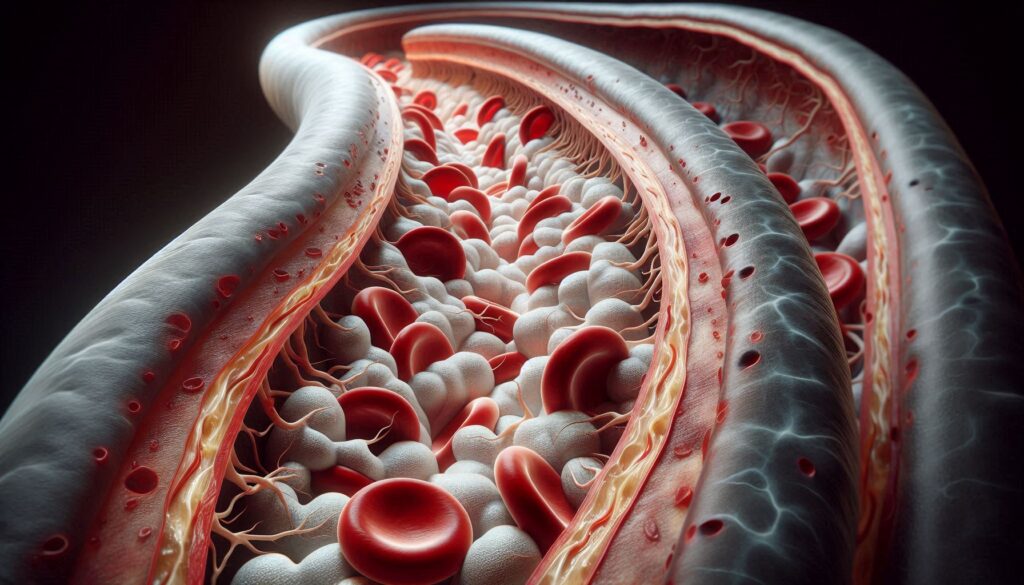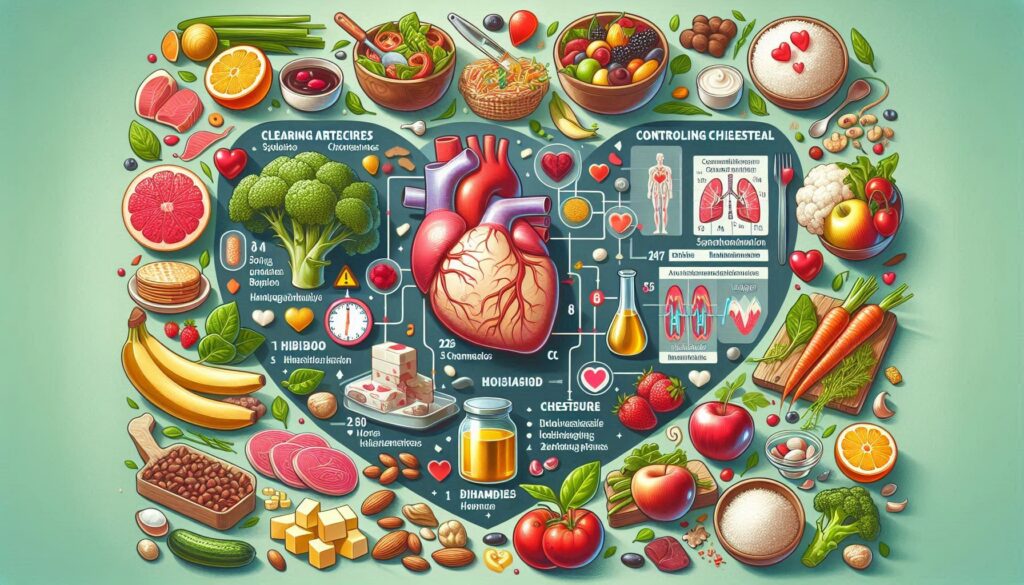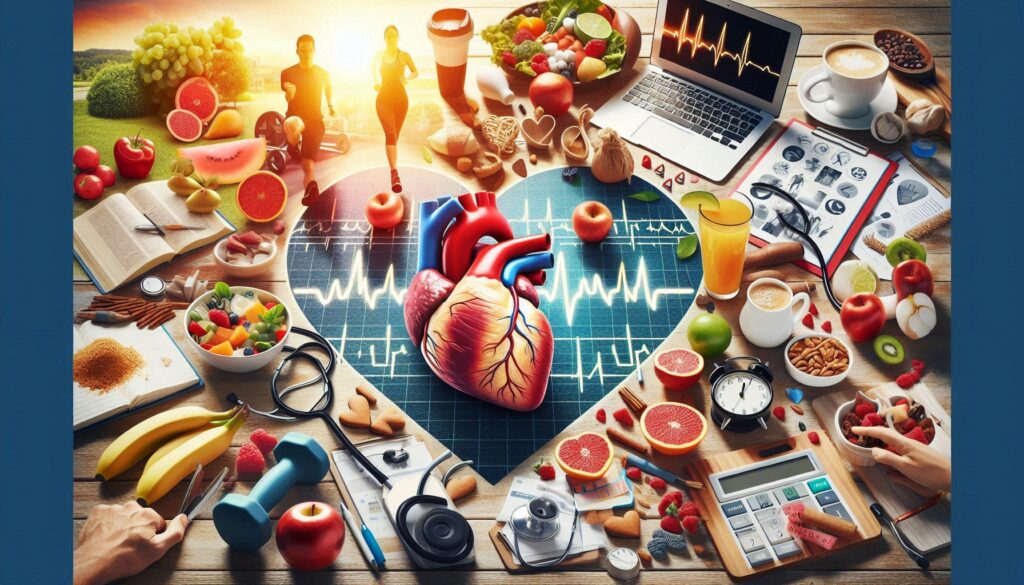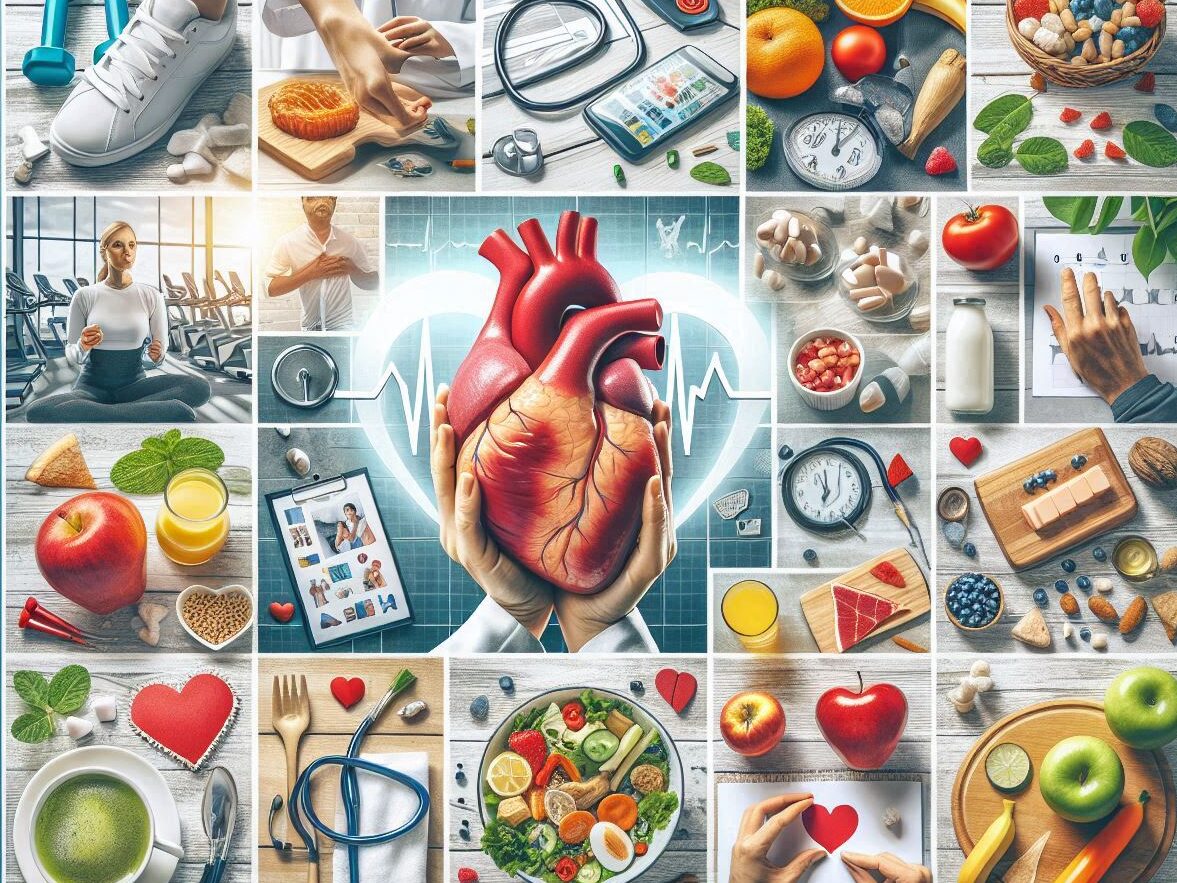Did you know that heart disease remains the leading cause of death worldwide? Quite often, the culprit behind this appalling statistic is the silent buildup of plaque in arteries, influenced by cholesterol levels.
While genetics can predispose you to heart disease, you can take the reins of your heart’s health by eating the right foods.

Just as highways and railways make a country’s economy thrive, arteries carry oxygen and nutrients throughout the body to ensure everything runs smoothly.
However, when cholesterol concentrations get out of control, plaque forms, narrowing arteries and limiting blood flow. This scenario increases your susceptibility to myocardial infarction, stroke, and other cardiovascular problems.
Unless your state is critical, your diet can help manage your lipid concentrations and promote healthy arteries. By including specific foods into your meals, you add natural ways to improve your heart health and overall well-being.
Before diving into today’s food list, let’s take a moment to understand the key players in this game.
Today’s Focus of Attention is reader-supported. We sometimes include products we think are useful for our readers. If you buy through links on this page, we may earn a small commission.
Understanding Cholesterol: The Good, the Bad, and the Triglycerides
Cholesterol itself is not evil. It is a waxy substance your body uses to build cells and produce certain hormones. But, as my mum has always said, “everything should be in the right proportion.” Balance is key.
The main types to be aware of are:
LDL (Low-Density Lipoprotein)
Often referred to as “bad” cholesterol, excessive levels of LDL can lead to plaque buildup in your arteries, increasing the risk of heart disease and stroke.
Think of LDL as a troublemaker, depositing unwanted debris in your blood vessels.
HDL (High-Density Lipoprotein)
This is what doctors call “good” cholesterol.
It serves as a scavenger that removes excess LDL from the bloodstream and transports it to the liver for further processing.
We can say that HDL is an artery-cleansing crew, keeping arteries clear and healthy.
Triglycerides
Triglycerides are a type of lipid found in the blood and the most common form of fat. They come from foods, especially butter and oils, and originate from extra calories you consume but don’t need right away.
Your body converts this caloric surplus into triglycerides and stores them in fat cells.
High triglyceride readings, along with low HDL or substantial amounts of LDL, may harden and thicken the artery walls (arteriosclerosis).
What Happens When Arteries Become Clogged with Plaque?
If this comes to pass, the passage of blood is compromised and cannot reach your heart and other organs, opening the door to various cardiovascular problems, including:
Coronary Artery Disease
Plaque buildup causes this common condition in the arteries that transport blood towards the heart.
Heart Attack (Myocardial Infarction)
It occurs when blood supply to a section of the heart muscle is blocked, often by a blood clot forming in a narrowed artery.
Stroke
If the bloodstream flow to a part of the brain is interrupted, the individual suffers a cerebrovascular accident, damaging neurons.
Peripheral Artery Disease
PAD affects blood vessels carrying blood to the limbs, causing pain and numbness.

Understanding these basics empowers you to make informed decisions about your diet and lifestyle. Without further ado, let’s explore those heart-healthy foods that keep your cholesterol in check and your arteries free of traffic jams.
10 Foods to Lower Cholesterol and Unclog Arteries

Foods rich in soluble fibre
1- Oats
2- Beans and Lentils
3- Apples, Pears, and Citrus Fruits
4- Flaxseeds
These are replete with soluble fibre, beta-glucan, pectin, and omega-3 fatty acids, which have the potential to cut down on LDL levels.
Well-stocked with healthy fats
5- Fish (Salmon, Tuna, Mackerel)
6- Avocados
7- Nuts (Almonds, Walnuts, Pecans)
They contain omega-3, monounsaturated fats, and plant sterols, which aid in cholesterol management and lowering LDL.
Other options:
8- Olive Oil
9- Green Leafy Vegetables (Spinach, Kale)
10- Garlic
In the same vein, they are teeming with monounsaturated fats, antioxidants, vitamins, and minerals, which lower LDL and regulate blood pressure.
Beyond the Plate: Daily Routines
While incorporating these healthy foods is a beneficial step towards better cardiovascular health, it’s just one piece of the puzzle. Think of your journey to a robust heart as a holistic approach, where several lifestyle factors work together to keep your engine running smoothly.

Regular Physical Activity
Aim for at least 150 minutes of moderate-intensity exercise or 75 minutes of vigorous-intensity workout per week. This improves blood flow, manages weight, and boosts HDL levels. Find activities you enjoy, such as brisk walking, swimming, dancing, or cycling, and ensure they are a staple on your agenda.
Maintain a Healthy Weight
Excess belly fat heightens the possibility of developing high cholesterol, high blood pressure, and diabetes, all of which contribute to heart disease.
Avoid Smoking
Such a bad habit damages blood vessels, lowers HDL, and increases the danger of blood clots. If you smoke, quitting would be one of the most impactful, healthy decisions you can make.
Manage Stress
Frequent tension induces hypertension and unhealthy coping mechanisms, such as overeating or smoking. Find wholesome ways to cope with challenges, like yoga, meditation, spending time in nature, or pursuing hobbies.
Get Enough Sleep
When sleep-deprived, your glands produce more cortisol, the stress hormone, impacting your heart’s vitality. Seek 7-8 hours of quality sleep each night to allow your body to rest and repair.
A healthy heart is a happy heart. By combining a balanced diet with positive habits, you’ll be well on your way to better cardiovascular health and a longer, more fulfilling life.
One Bite at a Time

The foods and habits you choose, from eating junk food and sugar-laden products to smoking or drinking alcohol, have a profound impact on your physical state.
By integrating these 10 artery-friendly foods into your meal plan, you support your cardiovascular system and reduce the risk of heart disease. Just consider that it’s not about drastic overhauls or deprivation. Instead, focus on making gradual, sustainable adjustments that you enjoy and keep up with over time.
For instance, start by adding a serving of oats to your breakfast, snacking on a handful of almonds, or swapping refined oils for olive ones. Small steps move mountains.
And, of course, don’t forget the power of lifestyle changes: regular exercise, stress management, and quality sleep.
As a final recommendation, talk to a doctor or dietitian for personalised advice that suits your unique needs and goals. They can help you create a plan that fits your personal practices and sets you on the path to optimal heart health.
Have you tried incorporating any of these foods into your nutritional strategy? What changes have you noticed? Share your stories in the comments below! If you find this information useful, please send this post to your friends and family. Let’s spread the word and help others achieve cardiovascular strength.


